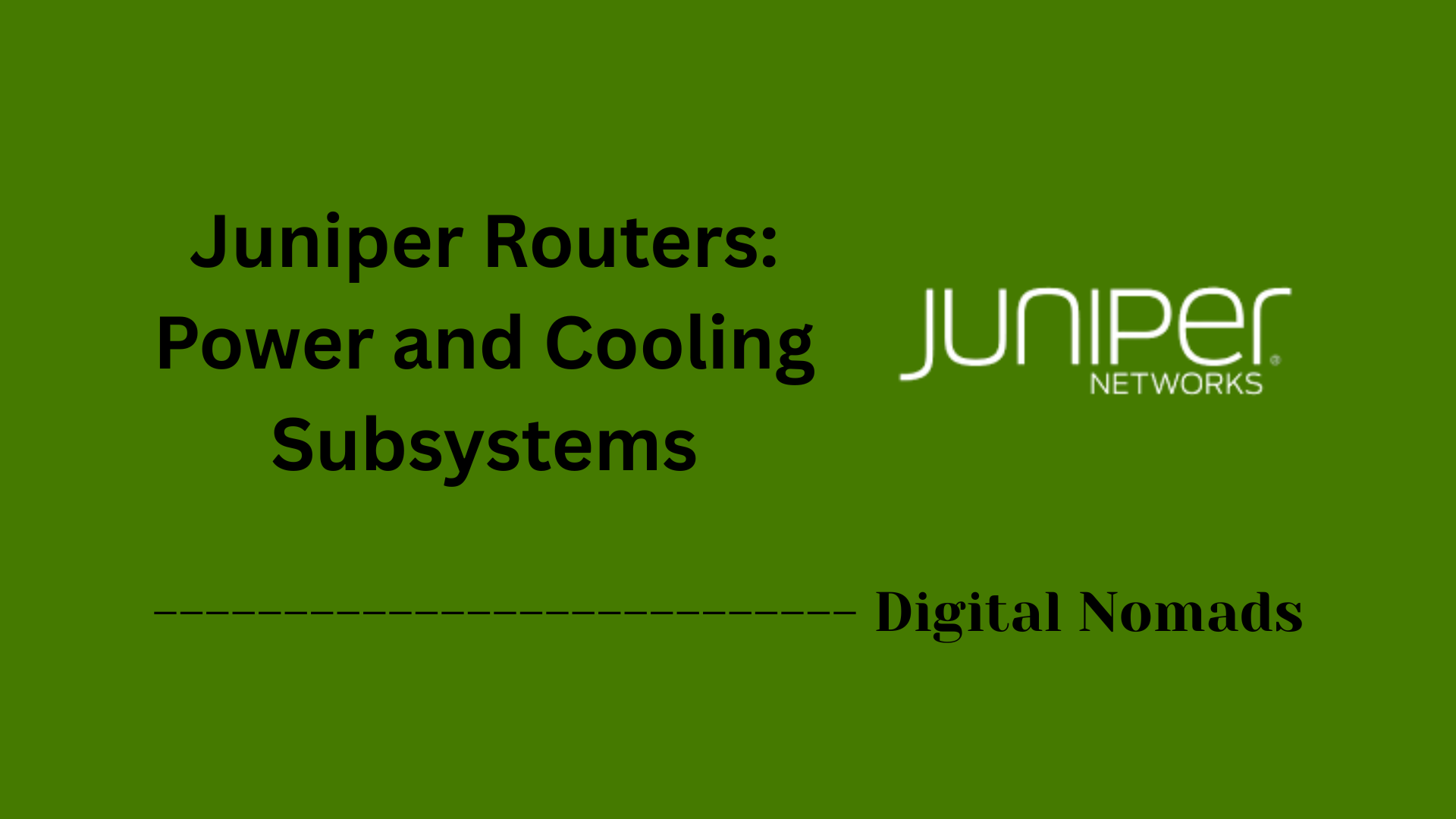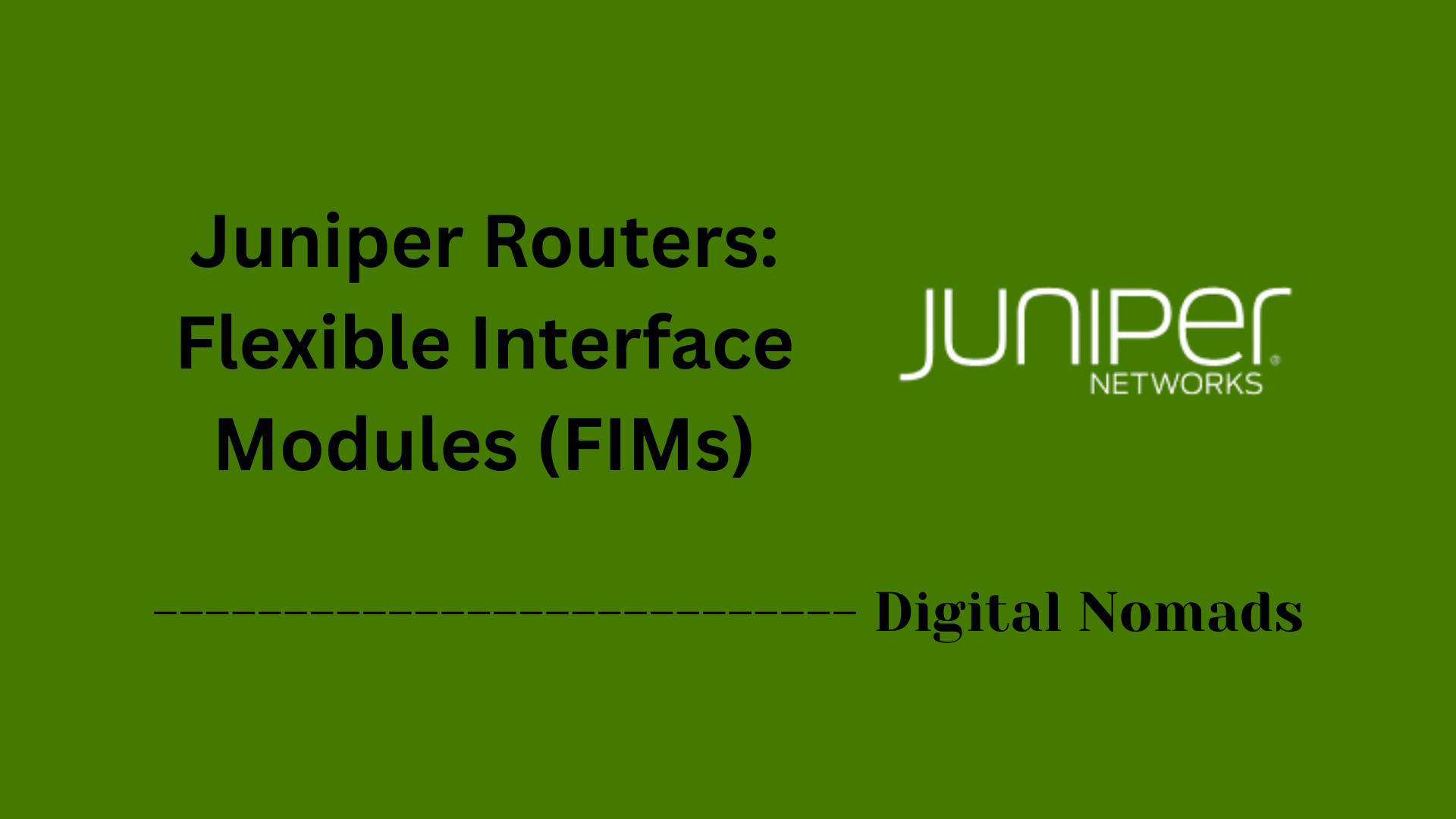Table of Contents
- Overview
- Key Functions of the PFE
- Architectural Overview
- Management and Operations
- PFE Platform Examples
- Conclusion
Overview: Juniper Routers Packet Forwarding Engine (PFE)
What is the PFE?
The Packet Forwarding Engine (PFE) is a specialized hardware and software subsystem at the heart of Juniper routers. It's responsible for processing, managing, and forwarding all network traffic that passes through the router. The PFE performs the data plane functions—meaning, it handles the actual movement of packets—while the Routing Engine (RE) manages the control plane tasks such as route computation, configuration, and management.
Why Do You Need to Know About the PFE?
Understanding the PFE is crucial for several reasons:
- Performance: The PFE directly influences the speed and efficiency of packet forwarding, which impacts overall network performance and scalability. If you need high throughput and low latency, choosing the right PFE architecture is essential.
- Reliability and Uptime: Because the PFE operates independently from the Routing Engine, traffic continues to flow even if the RE experiences issues or restarts—ensuring high network availability.
- Security and Policy Enforcement: Many security functions, including packet filtering and policing, are enforced at the PFE level, which allows immediate action on transit traffic without waiting for CPU-based processing.
- Quality of Service (QoS): The PFE is where QoS and traffic shaping policies are implemented, ensuring critical applications receive the bandwidth and priority they need.
How Does the PFE Work?
- Hardware Specialization: The PFE is typically built using ASICs (Application-Specific Integrated Circuits) or similar high-speed hardware. On larger platforms, it is implemented on separate line cards; in smaller routers, it's integrated onto the main board.
- Packet Handling: When a packet enters the router, the PFE:
- Buffers the packet.
- Parses its headers.
- Performs a fast lookup in the Forwarding Information Base (FIB), which is a hardware copy of the routing table.
- Takes action based on policies (forward, filter, drop, label, etc.).
- Forwards the packet to the appropriate output interface—all in hardware, without involving the routing software except under special circumstances.
- Independence: Because the PFE operates independently from the control-plane CPU, it can continue forwarding packets even if the control plane is under heavy load or out of service.
- Supporting Advanced Features: The PFE manages advanced features like MPLS label switching, packet-level policing, metering, and certain diagnostics.
In summary, the Packet Forwarding Engine is fundamental to Juniper routers' ability to deliver fast, reliable, and policy-driven traffic forwarding. Knowing how it functions enables network architects and operators to design, troubleshoot, and optimize networks for peak efficiency and resilience.
Key Functions of the PFE
The Packet Forwarding Engine (PFE) is responsible for high-speed processing and forwarding of packets within Juniper routers. Its main functions include:
-
Packet Forwarding:
Executes rapid Layer 2 and Layer 3 forwarding decisions using specialized hardware, such as ASICs, to ensure low latency and high throughput. -
Forwarding Information Base (FIB) Maintenance:
Holds an active, hardware-based copy of routing and forwarding tables synchronized from the Routing Engine, enabling the PFE to forward packets without involving the control plane CPU. -
Packet Filtering:
Applies stateless firewall filters and security policies to transit traffic for enforcing security and traffic management. -
Class of Service (CoS):
Prioritizes, queues, and rate-limits packets based on defined policies to maintain quality of service across different traffic types. -
MPLS Label Operations:
Handles MPLS-specific tasks such as pushing, popping, and swapping labels to facilitate multiprotocol label switching. -
ICMP Generation:
Generates certain ICMP messages (e.g., time-exceeded) within hardware to reduce latency and offload the Routing Engine.
Architectural Overview
The architecture of the Packet Forwarding Engine (PFE) in Juniper routers is designed to maximize performance, reliability, and separation of duties between hardware and software components. Here are the foundational aspects:
-
Hardware Specialization:
The PFE consists of dedicated hardware modules, often implemented as line cards containing ASICs, responsible for processing transit packets at high speed and with minimal latency. -
Separation from Routing Engine (RE):
Juniper routers clearly divide the control plane and data plane—while the RE handles control, management, and routing tasks, the PFE processes all regular traffic independently. This reduces performance bottlenecks and enhances network stability. -
Forwarding Path Operations:
Incoming packets are received by the PFE, where they are buffered, headers are parsed, and forwarding lookups are performed in the FIB (Forwarding Information Base) to determine the next hop and egress interface. -
Platform Design Variations:
Larger Juniper platforms (e.g., MX Series) use multiple PFEs distributed across modular line cards, while smaller platforms may integrate a single PFE and RE on the same board for compactness. -
Resiliency and High Availability:
PFEs are engineered to continue forwarding packets even if the RE encounters issues, ensuring uninterrupted data plane operation and minimizing downtime in critical environments.
Management and Operations
Efficient management and operational resilience are cornerstones of the Juniper Packet Forwarding Engine (PFE). This section highlights how administrators can interact with, monitor, and ensure continued performance of the PFE:
-
Monitoring Traffic and Performance:
Use commands such asshow pfe statistics trafficto access real-time packet handling and interface statistics. These tools help network operators quickly identify congestion, errors, or unusual traffic patterns. -
Software Updates and Independence:
On platforms with redundant Routing Engines (REs), PFE modules typically continue to operate without interruption during software upgrades or RE failover, ensuring uninterrupted data forwarding. -
Fault Tolerance and High Availability:
The PFE is engineered for autonomy; even in events where the RE becomes overloaded or temporarily unavailable, the PFE keeps forwarding transit traffic without disruption, reducing network downtime. -
Proactive Diagnostics:
Built-in diagnostic tools allow administrators to troubleshoot, verify PFE status, and perform targeted tests to maintain optimal operation and swiftly resolve potential issues. -
Configuration Management:
PFE behavior can be managed through configuration changes on the router, often pushed via the RE, allowing for fine-grained control over forwarding, filtering, and quality of service features.
PFE Platform Examples
Juniper implements the Packet Forwarding Engine (PFE) across a wide range of router platforms, each tailored for different scalability and deployment needs. Here are several notable examples:
-
MX Series Modular Routers (e.g., MX240, MX480, MX960):
These high-end, carrier-grade routers use multiple PFEs distributed across modular line cards, each managed by a chassis-based Routing Engine. This design supports massive throughput, flexible expansion, and high availability for core and edge networks. -
ACX Series Access Routers:
Compact and robust, these routers integrate both the Routing Engine and a single PFE on the same board, making them ideal for metro, mobile backhaul, and enterprise edge deployments. -
MX80/MX104 Routers:
Compact versions of the MX Series, these integrate a Routing Engine and PFE in a single chassis, providing advanced routing, MPLS, and edge services for smaller sites or distributed network architectures. -
PTX Series Routers:
Designed for high-performance data center and backbone applications, PTX platforms feature highly specialized PFE architectures to achieve ultra-low latency and very high packet processing rates.
Conclusion
As we’ve explored in this blog post, the Packet Forwarding Engine (PFE) is a vital component in Juniper routers, designed to deliver exceptional performance, scalability, and reliability. By offloading the heavy lifting of packet processing from the Routing Engine, the PFE ensures that traffic flows smoothly and efficiently, even in complex, high-demand network environments.
Key takeaways include:
- The PFE’s ability to handle packet forwarding, filtering, QoS, and MPLS operations at hardware speeds is critical for maintaining low latency and high throughput.
- Its architecture separates control and data planes, allowing for independent operation and increased fault tolerance.
- Management tools and diagnostics empower network administrators to monitor and optimize PFE performance continuously.
- Juniper offers a wide array of PFE-equipped platforms tailored to various network scales and use cases—from modular MX Series routers to compact ACX devices.
Understanding the PFE’s role helps network professionals optimize Juniper deployments and troubleshoot issues more effectively.
Thanks for reading! If you’re interested in more deep dives on networking technology or Juniper solutions, stay tuned for future posts. Happy routing!




